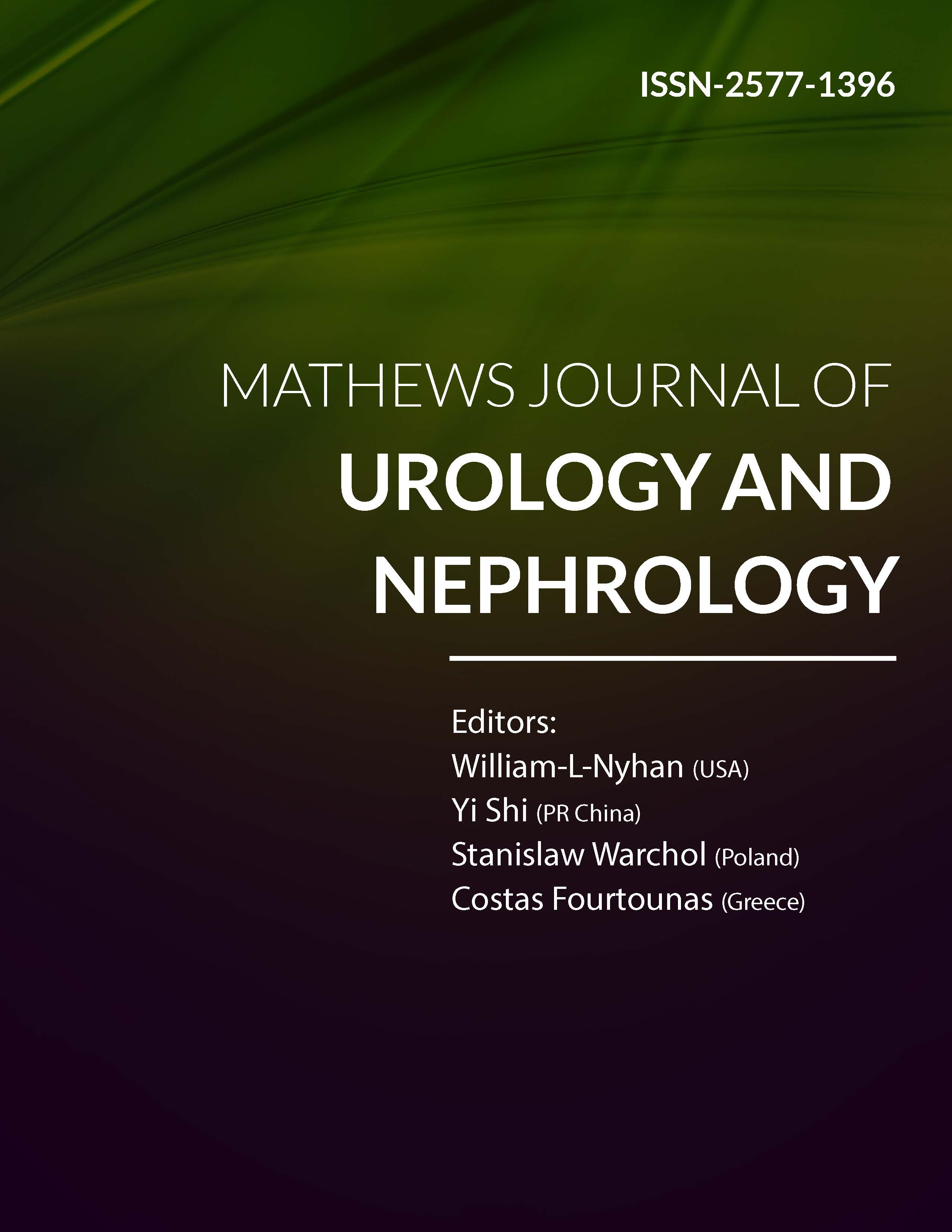
Information Links
Previous Issues Volume 6, Issue 1 - 2024
Erectile Dysfunction: Epidemiological and Clinical Case Series Profile at the Ibn Rochd University Hospital in Casablanca
Yassine Daghdagh, El Mostapha Abdi, Mahmoud Alafifi*, Anas Tmiri, Mouad Elbade, Amine Moataz, Mohamed Dakir, Adil Debbagh, Rachid Aboutaieb
Department of Urology, University Hospital Center IbnRochd Casablanca and Faculty of Medicine and Pharmacy of Casablanca, Morocco
*Corresponding author: Dr. Mahmoud Alafifi, Department of Urology, University Hospital Center IbnRochd Casablanca and Faculty of Medicine and Pharmacy of Casablanca, 19 Tarik ibnou quartiers des hôpitaux, Morocco, Phone: +212700148612, E-mail: [email protected]
Received Date: April 04, 2024
Published Date: April 17, 2024
Citation: Al-Affifi M, et al. (2024). Erectile Dysfunction: Epidemiological and Clinical Case Series Profile at the Ibn Rochd University Hospital in Casablanca. Mathews J Urol Nephrol. 6(1):18.
Copyrights: Al-Affifi M, et al. © (2024).
ABSTRACT
Erectile dysfunction (ED) is a prevalent condition with significant impacts on individuals quality of life and intimate relationships. Despite its common occurrence, ED often remains underreported and undertreated. This retrospective study aimed to investigate the epidemiological and clinical characteristics of ED among patients consulting at the andrology department of Ibn Rochd University Hospital in Casablanca over a two-year period (January 2022 to January 2024). A total of 205 patients were included in the study, with 101 presenting with ED, constituting 49.3% of the cohort. The average age of patients with ED was 55 years, with a notable prevalence observed among individuals aged 61-70 years. Most patients were monogamous and of urban origin. The majority of patients exhibited a sedentary lifestyle, overweight status, and a high prevalence of smoking, alcoholism, and cannabis use. The onset of ED was gradual in the majority of cases, with a significant delay in seeking medical help, often consulting traditional healers first. Comorbidity factors such as diabetes, hypertension, and ischemic heart disease were prevalent among ED patients. Physical examination findings revealed various anomalies, including penile curvature and benign prostatic hypertrophy. Psychosocial impacts of ED were evident, with marital conflicts and dissatisfaction in sexual relationships being primary concerns. The severity of ED ranged from moderate to severe, with associated disorders such as lower urinary tract symptoms, libido disorders, and premature ejaculation. The findings of this study underscore the importance of proactive screening for ED in clinical practice, particularly among individuals with comorbidities such as diabetes and hypertension. Early identification of ED and its associated risk factors can facilitate timely intervention and management, ultimately improving patients' overall health outcomes and quality of life. Furthermore, our study highlights the need for comprehensive management strategies tailored to individual patient needs, including lifestyle modifications, pharmacological interventions, and psychosexual counseling. Future clinical practice should prioritize a multidisciplinary approach to ED management, integrating urology, endocrinology, and psychology services to provide holistic care. Monitoring the outcomes of these interventions will be crucial to evaluating their effectiveness and refining treatment protocols to optimize patient outcomes.
Keywords: Erectile Dysfunction, Impotence, Urology Department, Ibn Rochd University Hospital, Casablanca, Penile Erection.